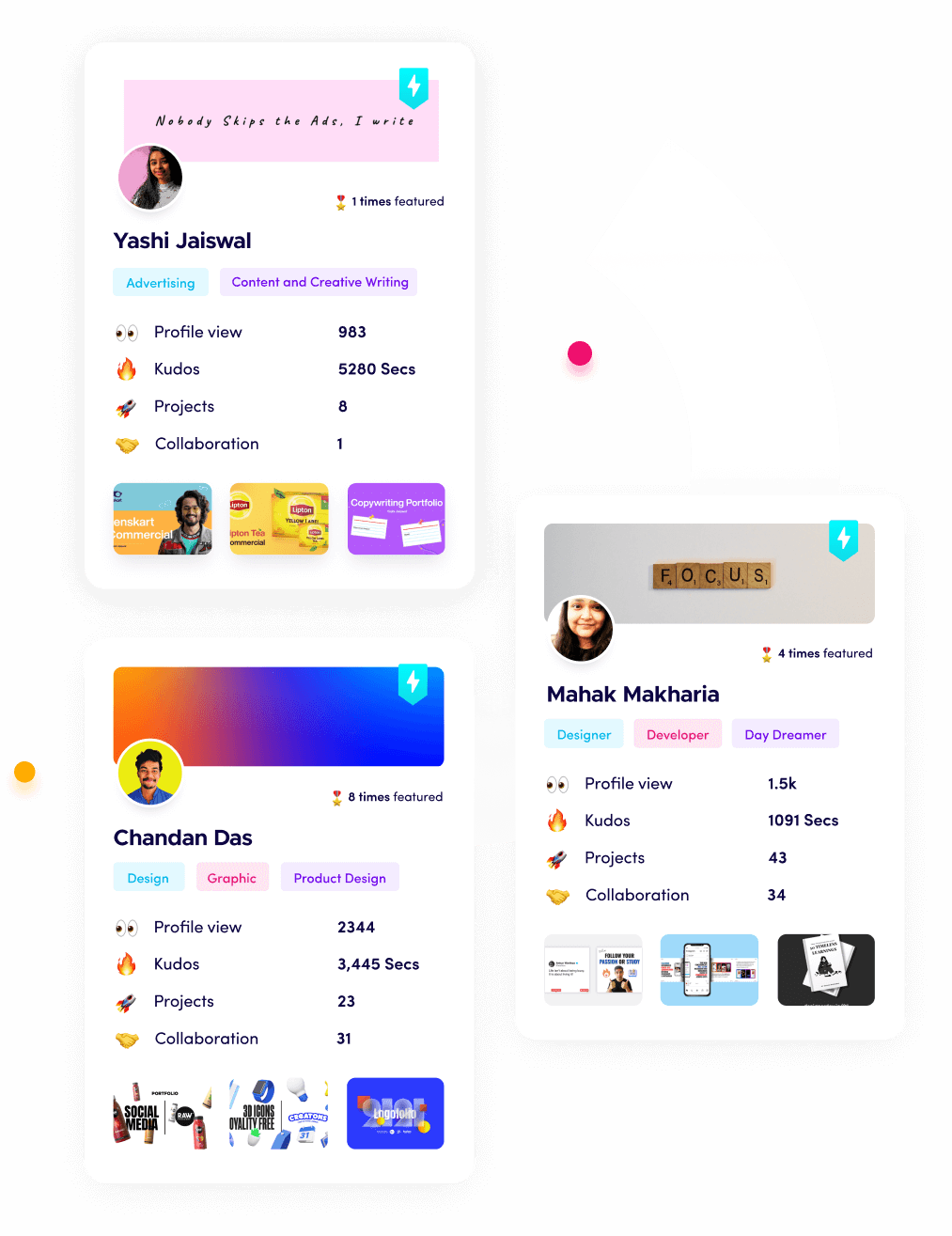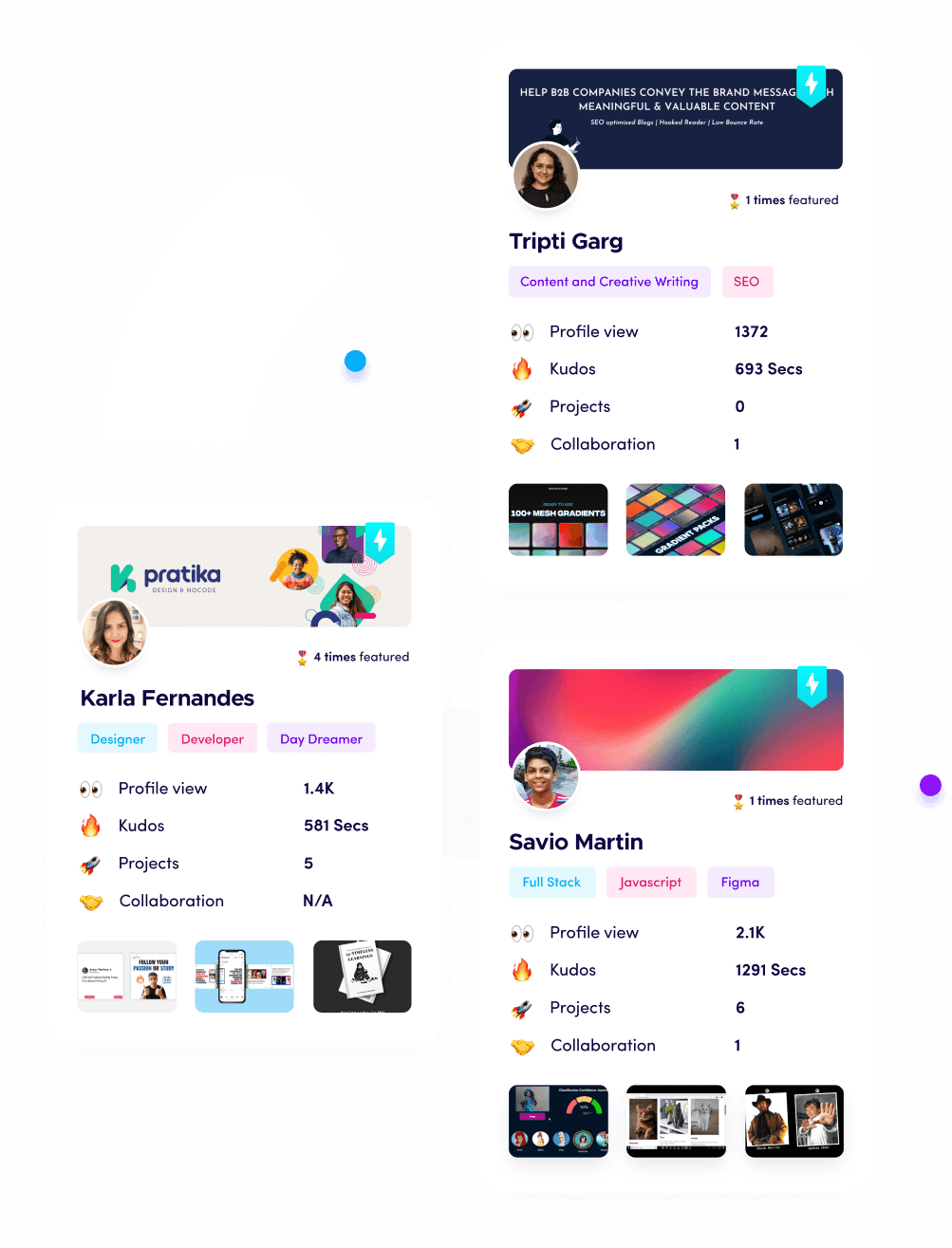16+ Performance Management Review Templates [2025]: Boost Your Team’s Growth with These Must-Have Tools

Riten Debnath
12 Jun, 2025
![16+ Performance Management Review Templates [2025]: Boost Your Team’s Growth with These Must-Have Tools](https://fueler.io/storage/canvas/images/Ajb2VK8frteabkxO8icWjYzsq8Y0PqTTjvvh4I4N.jpg)
Are you stuck with performance reviews that feel like a chore and leave your team uninspired? What if you could turn those tedious evaluations into engaging, growth-focused conversations that drive real results? As we head into 2025, performance management is all about meaningful feedback, clear goals, and employee empowerment. I’ve handpicked 16+ cutting-edge performance review templates to help you streamline your process, boost team morale, and skyrocket productivity. Whether you’re a manager, HR professional, or small business owner, these templates will make your reviews fair, consistent, and impactful. Let’s dive into the ultimate guide to revolutionizing your performance management strategy!
I’m Riten, founder of Fueler, a platform that helps freelancers and professionals get hired through their work samples. In this article, I’ve walked you through the most effective performance management review templates for 2025. But beyond using the right templates, the key is showcasing your team’s skills and achievements smartly. A performance review isn’t just a form—it’s proof of your team’s growth, credibility, and potential. Just like a strong portfolio, a well-structured review builds trust and sets the stage for success.
What Is a Performance Management Review?
A performance management review is a structured process where managers evaluate an employee’s work over a specific period, such as a quarter, six months, or a year. It’s not just about pointing out what went wrong—it’s a chance to celebrate strengths, identify areas for improvement, set clear goals, and align individual efforts with company objectives. Unlike traditional annual reviews that focus only on past performance, modern performance management in 2025 emphasizes continuous growth, two-way feedback, and career development. This approach fosters employee engagement, boosts retention, and drives business success.
These reviews help employees understand their contributions, feel valued, and stay motivated. For managers, they provide a framework to track progress, address challenges, and plan for career growth. Using templates ensures consistency, reduces bias, and makes the process efficient. In 2025, performance reviews are becoming more digital, with AI-driven insights and 360-degree feedback, making templates more critical than ever.
Why Use Performance Review Templates in 2025?
Performance review templates are pre-designed forms that guide managers and employees through the evaluation process. They save time, ensure fairness, and cover all essential aspects of performance. Here’s why they’re a game-changer for 2025:
- Consistency Across Teams: Templates provide a standardized format, ensuring every employee is evaluated fairly, regardless of their role or department. This reduces bias and builds trust in the process.
- Time-Saving Structure: Instead of creating forms from scratch, templates let managers focus on delivering meaningful feedback. They include sections for goals, skills, and feedback, streamlining the process.
- Actionable Feedback: Templates encourage specific, constructive feedback, helping employees understand their strengths and areas for growth. This clarity drives improvement and motivation.
- Alignment with Goals: Modern templates link individual performance to company objectives, ensuring everyone contributes to the bigger picture. This alignment is key to organizational success.
In 2025, templates are evolving with trends like real-time feedback, AI analytics, and mobile-friendly formats. They’re not just forms—they’re strategic tools for building high-performing teams.
16 Performance Management Review Templates
Below, I’ve detailed 16+ performance review templates tailored for different needs, frequencies, and goals. Each template is designed to be practical, user-friendly, and aligned with the latest 2025 performance management trends. I’ve drawn from recent sources like Lattice, Asana, and AIHR to ensure these are up-to-date and effective. Each point includes a detailed explanation, key sections, use cases, and actionable tips to maximize impact.
1. Annual Performance Review Template
This template evaluates an employee’s performance over a full year, focusing on core competencies, achievements, and long-term goals.
- Why It Works: Annual reviews provide a comprehensive overview of an employee’s contributions, making them ideal for assessing progress toward yearly objectives. They help with decisions about promotions, raises, or development plans. In 2025, annual reviews are shifting toward growth-focused discussions rather than just critiques.
- Key Sections: Employee details (name, role, department), performance ratings (1-5 scale for skills like productivity and teamwork), strengths, areas for improvement, progress on annual goals, manager comments, and employee feedback.
- Best For: Organizations with formal yearly evaluations, especially in corporate or large-scale settings.
- How to Use: Schedule reviews at year-end or fiscal year close. Use a digital platform like Asana to document and share feedback transparently. Encourage employees to prepare self-assessments to align expectations.
- Tip: Include a section for career aspirations to align reviews with long-term growth, as recommended by Asana’s 2025 performance management guide.
- Example Metrics: Productivity (rated 1-5), goal completion percentage, and leadership skills.
2. Quarterly Performance Review Template
This template focuses on short-term goals and frequent feedback, enabling quick adjustments to performance or strategy.
- Why It Works: Quarterly reviews keep employees aligned with objectives every three months, fostering accountability and agility. They’re perfect for fast-paced teams where priorities shift often. In 2025, frequent check-ins are a top trend for boosting engagement.
- Key Sections: Review period, key achievements, challenges faced, short-term goals for the next quarter, and support needed from managers or teams.
- Best For: Teams working on dynamic projects, startups, or industries with rapid changes like tech or marketing.
- How to Use: Conduct reviews at the end of each quarter. Use tools like ClickUp to track progress with custom statuses like “Evaluation Scheduled” or “Goals In Progress.” Pair with one-on-one meetings for deeper discussions.
- Tip: Focus on one or two key goals per quarter to avoid overwhelming employees, as suggested by ClickUp’s 2025 templates.
- Example Metrics: Project completion rates, client feedback scores, and task efficiency.
3. Mid-Year Performance Review Template
This bi-annual review assesses progress halfway through the year, balancing reflection and future planning.
- Why It Works: Mid-year reviews offer a checkpoint to celebrate wins, address challenges, and adjust goals before the annual review. They keep employees motivated and aligned with company priorities, especially in industries with long-term projects.
- Key Sections: Highlights of the past six months, progress on annual goals, areas for improvement, new objectives for the second half, and a “Start, Stop, Continue” feedback section.
- Best For: Companies wanting transparency and alignment twice a year, such as mid-sized firms or creative agencies.
- How to Use: Schedule mid-year reviews in June or July. Use a shared platform like PeopleGoal to store feedback and track changes over time. Encourage employees to bring examples of their work.
- Tip: Include a “Start, Stop, Continue” section to guide actionable feedback, as recommended by PeopleGoal’s 2025 review strategies.
- Example Metrics: Goal progress (percentage completed), collaboration skills, and initiative taken.
Speaking of showcasing work, a well-crafted performance review is like a portfolio—it highlights your team’s strengths and potential. At Fueler, our platform helps professionals build portfolios that showcase their skills through real work samples, making it easier for companies to hire based on proven talent. Just like a great review, a strong portfolio builds trust and credibility. Check out Fueler to see how we can help your team shine!
4. 90-Day Review Template for New Hires
Designed for new employees, this template evaluates onboarding success and early performance.
- Why It Works: The first 90 days are critical for new hires to adapt to their role and company culture. This template ensures they feel supported, clarifies expectations, and identifies early challenges. In 2025, onboarding reviews are key to reducing turnover.
- Key Sections: Onboarding experience feedback, role clarity, initial achievements, challenges faced, and career development plans for the next 90 days.
- Best For: Organizations with high onboarding rates, such as tech startups or retail chains.
- How to Use: Conduct reviews after the first three months. Pair with a manager check-in and peer feedback session. Use tools like Lattice to automate reminders and store responses.
- Tip: Include a section for peer feedback to assess team integration, as suggested by Lattice’s 2025 onboarding guide.
- Example Metrics: Training completion rate, task accuracy, and team collaboration feedback.
5. 360-Degree Feedback Review Template
This template gathers feedback from managers, peers, direct reports, and the employee for a holistic evaluation.
- Why It Works: 360-degree feedback provides a well-rounded view of performance, highlighting collaboration, leadership, and interpersonal skills. It fosters transparency and team alignment, a top trend for 2025.
- Key Sections: Self-assessment, peer feedback, manager evaluation, direct report input, and alignment with company values.
- Best For: Teams prioritizing collaboration, such as creative agencies or cross-functional teams.
- How to Use: Collect anonymous feedback through platforms like Personio to encourage honesty. Schedule a discussion to review findings and set goals.
- Tip: Use a mix of qualitative and quantitative questions to balance insights, as recommended by Personio’s 2025 feedback strategies.
- Example Metrics: Teamwork rating, communication effectiveness, and leadership impact.
6. Self-Evaluation Review Template
This template empowers employees to reflect on their own performance, strengths, and goals.
- Why It Works: Self-assessments encourage employees to take ownership of their growth, sparking meaningful manager-employee discussions. They also help managers understand employee perspectives, improving feedback quality.
- Key Sections: Key achievements, challenges faced, skill development progress, and future goals.
- Best For: Employees who value self-awareness or organizations fostering personal growth.
- How to Use: Ask employees to complete the self-assessment before the review meeting. Use it as a starting point for discussions, as suggested by Smartsheet’s 2025 templates.
- Tip: Pair with manager feedback to balance perspectives and avoid bias.
- Example Metrics: Self-rated productivity, skill improvement, and goal alignment.
7. Manager Performance Review Template
This template evaluates leadership skills, such as decision-making, team management, and strategic thinking.
- Why It Works: Managers set the tone for workplace culture, and evaluating their performance ensures they lead effectively. This template fosters accountability and supports leadership development, critical for 2025’s focus on strong leadership.
- Key Sections: Leadership qualities, team feedback, goal achievement, conflict resolution skills, and development plans.
- Best For: Organizations assessing leadership effectiveness, such as corporations or growing startups.
- How to Use: Collect anonymous team feedback to ensure honesty. Use tools like Plaky to streamline the process and track manager performance over time.
- Tip: Focus on specific leadership behaviors, like communication or empathy, as recommended by Plaky’s 2025 templates.
- Example Metrics: Team satisfaction scores, project success rates, and mentoring effectiveness.
8. Goal-Oriented Performance Review Template
This template focuses on tracking progress toward specific, measurable goals.
- Why It Works: By aligning individual efforts with company objectives, this template ensures employees contribute to organizational success. It’s ideal for companies using OKRs (Objectives and Key Results) or SMART goals, a growing trend in 2025.
- Key Sections: SMART goals, progress updates, obstacles faced, and next steps for goal achievement.
- Best For: Companies using OKR frameworks or goal-driven cultures, like tech or consulting firms.
- How to Use: Review goals quarterly or monthly using tools like PossibleWorks to track progress. Discuss barriers and resources needed to succeed.
- Tip: Break goals into smaller milestones to maintain momentum, as suggested by PossibleWorks’ 2025 OKR guide.
- Example Metrics: Goal completion percentage, task milestones, and resource utilization.
9. Behavioral Performance Review Template
This template evaluates soft skills like teamwork, communication, and problem-solving.
- Why It Works: Soft skills drive workplace culture and collaboration, which are critical for team success in 2025. This template highlights behaviors that impact team dynamics and productivity.
- Key Sections: Behavioral ratings (e.g., teamwork, adaptability), specific examples of actions, and improvement plans.
- Best For: Teams prioritizing culture, such as creative or service-oriented industries.
- How to Use: Use a 4-point Likert scale (e.g., Needs Improvement to Exceeds Expectations) for clear ratings. Include real examples to support feedback, as per AIHR’s 2025 recommendations.
- Tip: Focus on observable behaviors, like “actively listens in meetings,” to make feedback actionable.
- Example Metrics: Team collaboration score, communication clarity, and adaptability rating.
10. Customer Service Performance Review Template
Designed for customer-facing roles, this template assesses interactions with clients and service quality.
- Why It Works: Exceptional customer service is vital for business reputation and retention. This template ensures employees meet client expectations, aligning with 2025’s focus on customer-centricity.
- Key Sections: Customer feedback scores, communication skills, issue resolution speed, and client satisfaction comments.
- Best For: Retail, hospitality, or support teams in industries like e-commerce or healthcare.
- How to Use: Integrate customer feedback surveys (e.g., via Zendesk) into the review process. Discuss specific client interactions to provide context.
- Tip: Use real customer comments to highlight strengths and areas for growth, as noted by Plaky’s 2025 templates.
- Example Metrics: Net Promoter Score (NPS), response time, and complaint resolution rate.
11. Simple Performance Review Template
A basic template for quick evaluations, focusing on overall performance and key skills.
- Why It Works: This streamlined template is perfect for small teams or informal reviews, saving time while covering essentials. It’s ideal for businesses without complex HR systems.
- Key Sections: Employee details, overall performance rating, key strengths, areas for improvement, and feedback summary.
- Best For: Small businesses, startups, or teams with limited HR resources.
- How to Use: Use for quick check-ins or informal reviews. Store in a simple platform like Charlie HR for easy access, as suggested by ClickUp’s 2025 guide.
- Tip: Keep questions open-ended to encourage discussion, like “What’s your biggest achievement this period?”
- Example Metrics: Overall performance score, task completion rate, and punctuality.
12. Numerical Scale Review Template
This template uses a numerical scale (e.g., 1-5) to rate performance metrics like productivity and teamwork.
- Why It Works: Numerical ratings provide clear, quantifiable feedback, making it easy to track progress over time. They’re ideal for data-driven organizations looking for measurable insights in 2025.
- Key Sections: Rating scales for key metrics (e.g., productivity, collaboration), comments for each rating, and goal-setting section.
- Best For: Data-driven companies or teams needing objective evaluations.
- How to Use: Use a consistent scale across reviews. Pair ratings with qualitative feedback to avoid over-reliance on numbers, as warned by Quantum Workplace’s 2025 trends.
- Tip: Limit ratings to 5-7 metrics to avoid overwhelming employees.
- Example Metrics: Productivity (1-5), teamwork (1-5), and initiative (1-5).
13. SBI Feedback Model Template
Based on the Situation-Behavior-Impact (SBI) model, this template focuses on specific actions and their outcomes.
- Why It Works: The SBI model ties feedback to specific situations, making it clear and actionable. It’s great for addressing specific behaviors or project outcomes, a key focus for 2025 reviews.
- Key Sections: Situation description, observed behavior, impact on team or project, and action plan.
- Best For: Teams needing targeted feedback, such as project-based or agile teams.
- How to Use: Train managers on the SBI model to ensure consistency. Use Teamflect’s templates for easy implementation, as recommended in their 2025 guide.
- Tip: Use real examples, like “During the client pitch, you presented confidently, which won the contract.”
- Example Metrics: Impact rating, behavior frequency, and follow-up actions.
14. Weekly Check-In Review Template
This informal template supports weekly one-on-one meetings to track ongoing progress and provide real-time feedback.
- Why It Works: Weekly check-ins keep employees engaged, address issues early, and foster a culture of continuous feedback, a top trend for 2025. They’re ideal for mentoring and building trust.
- Key Sections: Weekly achievements, challenges faced, priorities for the next week, and support needed.
- Best For: Agile teams, remote workers, or managers prioritizing frequent communication.
- How to Use: Schedule 15-20 minute check-ins via tools like Slack or Microsoft Teams. Document key points for future reference.
- Tip: Keep discussions light and focused on progress, as suggested by Lattice’s 2025 feedback trends.
- Example Metrics: Task completion rate, weekly goal progress, and engagement level.
15. Competency-Based Review Template
This template evaluates specific skills or competencies tied to an employee’s role, such as technical expertise or leadership.
- Why It Works: By focusing on role-specific skills, this template ensures employees are meeting job requirements and growing in their expertise, aligning with 2025’s skill-focused reviews.
- Key Sections: Competency ratings, examples of skill application, development needs, and training recommendations.
- Best For: Technical roles, leadership positions, or industries requiring specialized skills.
- How to Use: Define 3-5 key competencies per role. Use tools like Workable to align competencies with job descriptions.
- Tip: Include a training plan to address skill gaps, as per AIHR’s 2025 competency trends.
- Example Metrics: Technical skill proficiency, leadership competency score, and training completion.
16. Remote Worker Performance Review Template
Tailored for remote employees, this template assesses productivity, communication, and collaboration in virtual settings.
- Why It Works: With remote work still prevalent in 2025, this template ensures remote employees are supported and evaluated fairly, addressing unique challenges like communication barriers.
- Key Sections: Remote work productivity, virtual collaboration, communication effectiveness, and work-life balance feedback.
- Best For: Remote or hybrid teams in industries like tech or customer support.
- How to Use: Use video calls for reviews and tools like Trello to track remote tasks. Include questions about remote work challenges, as suggested by Remote’s 2025 guide.
- Tip: Ask about tools or resources needed to improve remote performance.
- Example Metrics: Virtual meeting participation, task delivery time, and team communication score.
Final Thoughts
Performance management reviews in 2025 are about more than checking boxes—they’re about building trust, fostering growth, and aligning teams with organizational goals. These 16+ templates offer a flexible, modern approach to suit any team, from startups to corporations. By using these tools, you can create consistent, fair, and actionable reviews that empower your employees to thrive. Whether you’re assessing new hires, managers, or remote workers, the right template can transform your reviews into a catalyst for success. Start implementing these templates today, and watch your team’s performance soar!
FAQs
1. What are the best performance review templates for 2025?
The best templates for 2025 include the Annual Performance Review, 360-Degree Feedback, and Goal-Oriented Review templates. They align with trends like frequent feedback, holistic evaluations, and goal alignment, ensuring fair and actionable reviews.
2. How to conduct a performance review effectively in 2025?
Use a structured template, schedule regular check-ins, and focus on two-way feedback. Tools like Lattice or ClickUp can streamline the process, while clear goals and examples make feedback actionable.
3. Why are performance management reviews important for employee growth?
Reviews provide clarity on strengths, areas for improvement, and career goals. They boost motivation, align employees with company objectives, and support skill development, fostering long-term growth.
4. What tools can I use for performance reviews in 2025?
Popular tools include Lattice, ClickUp, Asana, and Personio. These platforms offer templates, automation, and analytics to simplify reviews and track performance metrics effectively.
5. How to create a performance review template for remote teams?
Focus on metrics like virtual collaboration, communication, and productivity. Include sections for remote-specific challenges and use tools like Trello or Slack to track progress and feedback.
What is Fueler Portfolio?
Fueler is a career portfolio platform that helps companies find the best talents for their organization based on their proof of work.
You can create your portfolio on Fueler, thousands of freelancers around the world use Fueler to create their professional-looking portfolios and become financially independent. Discover inspiration for your portfolio
Sign up for free on Fueler or get in touch to learn more.


